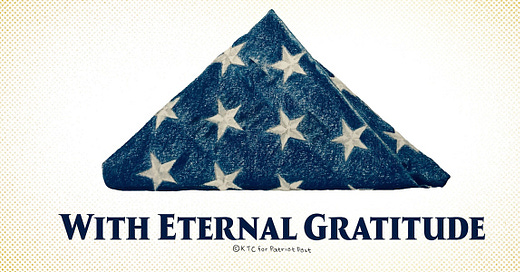Samuel Adams had this to say at the beginning of our great nation in 1777.
”Contemplate the mangled bodies of your countrymen, and then say, What should be the reward of such sacrifices? If ye love wealth better than liberty, the tranquility of servitude than the animating contest of freedom, go from us in peace. We ask not your counsel or arms. Crouch down and lick the hands that feed you. May your chains sit lightly upon you, and may posterity forget that ye were our countrymen!"
He knew the price of freedom. A short century later, the Civil War claimed over 620,000 lives to preserve the miracle of America. On this day, known as Memorial Day, originally called Decoration Day, the tradition began in the United States to honor soldiers who died in the American Civil War.
People started decorating soldiers’ graves with flowers and flags. The practice started spontaneously in various towns, but one of the earliest recorded events was in 1865 in Charleston, South Carolina. Freed African Americans honored Union soldiers buried at a racetrack-turned-prison. In 1868, General John A. Logan, leader of the Grand Army of the Republic, a Union veterans’ group, declared May 30 as the day for decorating the graves of Civil War soldiers. The date was chosen because it wasn’t tied to any specific battle.
Observances spread, with ceremonies held in both Northern and Southern states.
From the post-Civil War era to the early 1900s, Decoration Day evolved into a tradition, primarily focusing on honoring the Civil War's casualties. By the late 19th century, it included soldiers from other wars, like the Spanish-American War. After World War I, the holiday evolved to honor all American military personnel who died in any war. It wasn’t until 1971 that Congress designated it Memorial Day and made it the last Monday in May.
Memorial Day takes me back to my roots in tiny Lock Seventeen, Ohio. Many of the seventy-five residents of Lock, as we called it, assembled at the old Civil War Beersheba cemetery behind town. The grey-haired ladies of the Daughters of the Republic organized the affair, which was mandatory for us kids, eight or ten of us.
In the early afternoon, the people of Lock would dutifully make their way to the cemetery, where we’d find old men in ill-fitting uniforms standing with guns. We kids had worked hard for a month or more to memorize poems honoring men we didn’t know who were killed in battle. We’d recite our poems, people would speak of those who died in battle, the old men would fire their guns, and then people would have a luncheon.
The meaning of it all didn’t hit home until one Easter Sunday morning when our town handyman, Virgil, told me about his time in a World War II submarine when he nearly died. Virgil was always front and center for the ceremonies, as was his friend John, a Marine veteran of Iwo Jima, who would always cry when the guns fired.
Then, two weeks after graduating from high school, I entered the Marine Corps. Less than a year later, I saw my first veterans die in Santo Domingo, Dominican Republic. I was wounded, lying on a hospital ship, I thought about those who died and about the grey-haired ladies of Lock and the poems they made me recite as a snot-nosed kid.
A few months later, I’m in Vietnam, where death was more common than a letter from home. One morning at the infamous Street Without Joy in Quang Tri Province, after being overrun and fighting all night, my fellow Marines and I zipped thirty-five dead brothers into green body bags for the ride home to America, where unsuspecting loved ones were about to have their lives changed forever.
It was right about here that I began to understand the lump in Virgil’s throat when he heard the Star Spangled Banner and the tears dripping down Marine John’s face when he heard the 21-gun salute at Beersheba cemetery so long ago. When I returned home two years later, I fully understood that freedom isn’t free.
But I returned to a place that, as John Denver sang, was a place I’d never been before. The dead were being buried amidst protests and indifference. Once honored and held in high esteem, the veteran was now ridiculed and disparaged at every turn. The grey-haired ladies died, saddened by what they saw.
My last Memorial Day in the Marine Corps was spent in Fort Wayne, Indiana. I was on what they called the I & I Staff, or Inspector Instructor, at the Marine Corps Reserve Center there. My last five months were spent leading the firing squad for military funerals of Marines who died in Vietnam and lived within a one-hundred-mile radius of Fort Wayne. On the Saturday before Memorial Day in 1968, we buried the second of two brothers killed in action. They died four weeks apart.
Memorial Day is a treasure God gave us to honor those who gave their lives for others. Unfortunately, it’s now tarnished by those who neither teach, practice, honor, or preserve the sacrifices of millions who gave it all that we might live free. It’s another Hallmark holiday.



